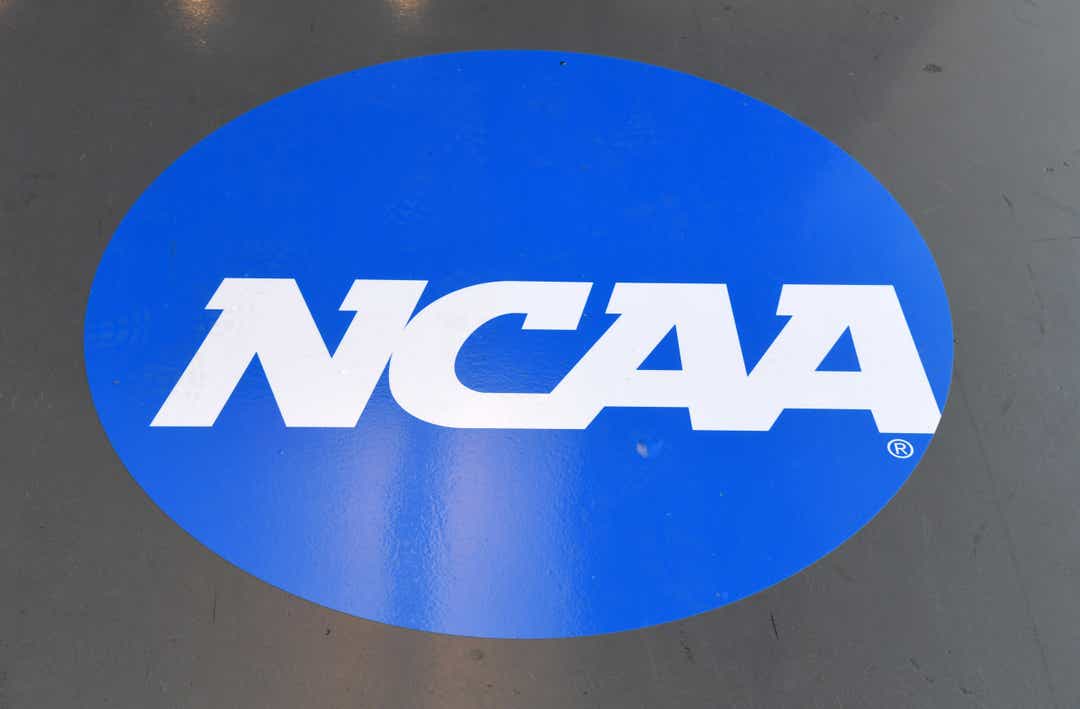All NCAA Division I athletes in spring sports will be given an extra season of eligibility to make up for the one that was cancelled due to the coronavirus pandemic, the association announced Monday.
But the decision by the NCAA Division I Council, which handles day-to-day rules making for the association’s top-level schools, will allow those schools to determine how much scholarship aid to give next year to athletes who were in what would have been their final season of eligibility.
That means such an athlete could be offered a place on the team, but $0 in athletic scholarship money.
NCAA rules normally prohibit schools in the Power Five conferences or any non-Power-Five school that makes a multi-year scholarship offer to reduce the amount of aid an athlete receives from one year to the next for athletic reasons.
However, the Council did agree to adjust scholarship limits to account for incoming athletes and athletes who decide to stay for an extra season. Under that arrangement, schools will be able to exceed existing scholarship limits if they give financial aid to any athlete who would have been in their final season of eligibility this year but chooses to return.
Athletes in winter sports will not get an additional season of eligibility, the Council decided. Winter sports NCAA championships, including the basketball tournaments, were cancelled because of the pandemic.
OPINION: Devil is in the details with NCAA's spring-sports eligibility ruling
SPORTS SHUTDOWN: Latest news on sports’ coronavirus shutdown delivered to you. Sign up here

While athletics directors agreed that Monday's action was the correct one for athletes, they were still digesting the potential impact. They were able to identify challenges that range from cost, to baseball-specific issues rising from Major League Baseball reducing its draft this year, to Title IX, to the impact on future roster and scholarship management and the recruitment of athletes who are now high school juniors and sophomores.
"Overall, it was a common-sense approach that took into consideration the unique challenge of right now," said Montana AD Kent Haslam, president of the FCS Athletics Directors Association. "And like with any good decision, the repercussions are endless. We'll be dealing with these things two, three years down the road."
Financially, the prospect of taking any action to extend athletes' eligibility was going to be difficult under the best economic circumstances. But with athletics department revenues — like those for higher education, as a whole — under present strain and additional threat in the future, it could be very difficult.
That's why, in what an NCAA statement termed "a nod to the financial uncertainty faced by higher education," schools are being given the latitude to determine how much aid current seniors will get if they return next year
Without that latitude, giving an additional season of eligibility just to seniors on spring-sports teams would have left public schools in the Power Five conferences facing a cost of anywhere from $500,000 to $900,000, a recent USA TODAY analysis of schools’ financial reports to the NCAA showed.
Schools outside the Power Five would face lower amounts, but FCS schools that have relatively robust spring sports offerings would have been looking at a cost of around $400,000.
On the revenue side, the NCAA’s governing board of college presidents decided last week that the association’s direct distribution to Division I conferences and schools this year will be $225 million, rather than the planned $600 million. But those amounts constitute roughly 2% to 5% of athletics departments’ operating revenue.
Bigger problems could come in ticket revenue and donations, and matters would get much worse if the football season is affected.
"Today’s vote … is the right thing to do," Houston athletics director Chris Pezman said in a statement to USA TODAY. "We’re going through an unprecedented situation right now, but the opportunity to give student-athletes the ability to restore a year of eligibility is in the best interest for everyone that was affected. Our athletics department will work in the coming weeks to see this process through not only for our student-athletes, but for all of our program involved from a financial and operational standpoint.”
The operational side could become particularly challenging in baseball. Players in that sport who enroll at a four-year college become eligible for the major league draft after three years in school.
In addition to the prospect of seniors being interested in returning, Major League Baseball's decision to reduce the draft this year to as few as five rounds could result in more non-seniors looking to stay in school. And while schools will be able to exceed the scholarship limit to assist seniors, they will not be able to do that with athletes in other classes.
Jeff Bourne, AD at James Madison — a FCS school — said his school will "do everything we can to keep (seniors who choose to return) whole" in terms of their athletic scholarship money for next year. "We have to look at finding a way to make that happen. It depends who all returns in any given sport."
Bourne said that uncertainty also raises the prospect of schools at least temporarily facing gender-equity issues because the number of seniors who choose to return may end up being disproportionate. "That could materially skew the numbers," he said. "And I don't know whether we would get any leniency for that one year."
Read Again Brow https://news.google.com/__i/rss/rd/articles/CBMihAFodHRwczovL3d3dy51c2F0b2RheS5jb20vc3Rvcnkvc3BvcnRzL2NvbGxlZ2UvMjAyMC8wMy8zMC9jb3Jvbm92aXJ1cy1uY2FhLWdyYW50LXNwcmluZy1zcG9ydHMtYXRobGV0ZXMtZXh0cmEtZWxpZ2liaWxpdHkvNTA5MDM2MjAwMi_SASdodHRwczovL2FtcC51c2F0b2RheS5jb20vYW1wLzUwOTAzNjIwMDI?oc=5Bagikan Berita Ini














0 Response to "NCAA grants waiver for all spring-sports athletes to receive extra year of eligibility - USA TODAY"
Post a Comment